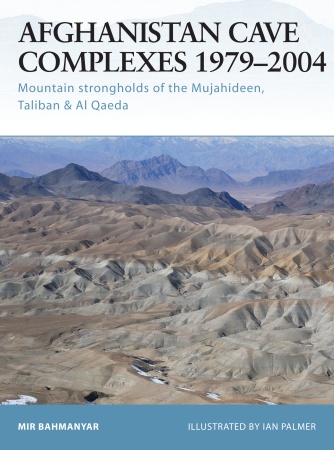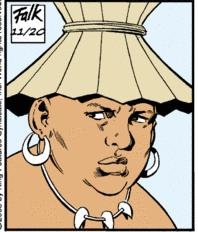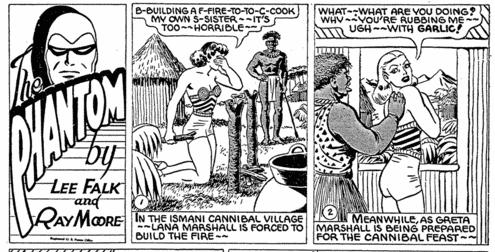
Friday's mail (snail and electronic) delivered two very nice new reviews of Lou Anders' Fast Forward 2.
The December 2008 issue of Locus has a new column by the unstoppable Gardner Dozois, "Gardnerspace," which opens with Gardner's conclusion that FF2 may be the best (by a "very slight edge") original anthology in a year of many stellar contenders, singling out stories by Benjamin Rosenbaum/Cory Doctorow, Nancy Kress, Jack Skillingstead, Paul Cornell, Paul McAuley, Karl Schroeder and Tobias Buckell, Kristine Kathryn Rusch, Kay Kenyon, and yours truly. An earlier version of this review appeared on the Asimov's message boards, and in the process of translation Gardner's kind note of my story has been adverbially upgraded from "cool" to "seriously cool" (that's right before the "almost too self-consciously cool, in fact" part, which gives me hope that I may yet succeed in my Quixotic effort to remake Arthur Fonzarelli as a pop Lacanian science fiction writer). Add that to the blurb list (or maybe better, "too cool for Gardner Dozois"?).
Friday's update of Strange Horizons includes a wonderful review by Alvaro Zinos-Amaro, in which he calls FF2 "that rare beast among anthologies of the imagination: one whose content actually provides a materialization of its own theoretical blueprint." He covers all of the stories along with some very insightful commentary about the editorial contribution and vision, and has this to say about my piece:
"The Sun Also Explodes" by Chris Nakashima-Brown is Fast Forward 2's most stylistically engaging outing, and perhaps also its most difficult to summarize. Living in Colonia, a legally independent "microstate," and pursuing a three-year fellowship paid for by the Virilian Investors Cultural Fund, the narrator finds himself entangled, emotionally and professionally, with bio-artist Elkin, a "genomic postmodernist." Nakashima-Brown brilliantly depicts the subtle inter-personal dynamics of the narrator with his friends and with Elkin, and enriches his mostly plot-less tale with thoughtful literary references (get out your Hemingway) and poetic descriptions ... Make no mistake, despite the literary veneer, the SF elements are everywhere, and this is an SF story at its core, not a modernist study in ennui transliterated to the idiom of SF. But Nakashima-Brown's SF "furniture" is not always brightly illuminated or center-stage. It is no less dazzling or mesmerizing for it, though.
Hey, they're flying off the Borgesian storerooms at Amazon for close to $10 a copy. Why not support your favorite science fiction small press and buy one for everyone on your list? If you need to mix it up, you can throw in a copy of Spicy Slipstream Stories for good measure.

If you are looking for the kind of media that generates this kind of weirdness, following is a holiday gift menu of some of things I have most enjoyed over the past year, just the kind of thing to cause awkward moments of disturbed bafflement by the tree:
The Architecture of Parking, by Simon Henley - A coffee table book filled with beautiful black and white photos of concrete parking structures, for those of you who can't wait for Geoff Manaugh's BLDGBLOG book.

The Hyena and Other Men, by Pieter Hugo - A coffee table book filled with photos of Nigerian dudes roaming the rough streets of Lagos with hyenas on leashes. I first saw one of these photos on the web some years back, and it just has some insanely potent 21st century juju going. I think these guys could handle The Ghost Who Walks just fine.
Terror and Consent, by Phillip Bobbitt - Though it has healthy dollops of warmed over neocon drool from this sometime advisor to Sarah Palin's running mate, this book has some very interesting surveys and explorations of the status of the nation state in the 21st century, and the emergence of the "market state," very interesting material to mix in the cerebral soup for anyone interested on extrapolating the coming century.
Year’s Best SF 13, edited by David Hartwell & Kathryn Cramer - A rare sf anthology filled with stories this weird reader wants to read, lots of politically (and geopolitically) charged speculative fictions for the age of the GWOT.
Angler: The Cheney Vice Presidency, by Barton Gellman - The last Dick Cheney book? See no one less than Dick Armey describe how his old friend personally lied to him about WMD, and how he wishes he could go back and prevent the Iraq war, as he believes he could have had he known the truth.
Buda’s Wagon: A Brief History of the Car Bomb, by Mike Davis - Did you know the first car bomb was a horse cart detonated on Wall Street by an anarchist in 1920? Mike Davis does, and he also knows the future. Talk about the street finds its own uses for things.
The Second Plane, by Martin Amis - I read the UK edition of this collection of Martin Amis essays about 9/11 and its aftermath, an interesting box of prisms through which to think about the period we are now leaving.
Biophilia, by Wena Poon - A wonderfully fun bit of technicolor prose from this gifted Singaporean now living in the US. Though (perhaps deservedly) Poon gets more attention for her literary short fiction, she has a knack for the eyeball kick that should not be wasted.
Rogue Male, by Geoffrey Household (New York Review of Books Classics edition, with an introduction Victoria Nelson) - I first read this wonderful short novel years ago, an amazing lean thriller about an English gentleman hunter who tries to shoot Hitler and must literally go to ground. The new introduction is worth the book itself, and the book is required reading for anyone who loves thrillers with natural settings — a kind of literary proto-Rambo. NYRB's publishing imprint is putting out tons of wonderful volumes like this, including many genre lost diamonds like Christopher Priest's The Inverted World (now on my to-read shelf) and John Wyndham's The Chrysalids.
Maps & Legends, by Michael Chabon - Essays by this year's Nebula winner, in which his embrace of all things skiffy and lending to our genre of his much-coveted literary gentility is fully expressed, in an insanely beautiful package from McSweeney's.
The Black Lizard Big Book of Pulps, edited by Otto Penzler - All the hardfisted pre-WWII fiction you can read while drunk on eggnog, found under my tree last year.
McMafia, by Misha Glenny - If you're dying to actually meet those Nigerian spammers, here's your chance in this excellent journalistic tour of the high crimes of the 21st century.
Drug Lord: The Life and Death of a Mexican Kingpin, by Terrence Poppa - Not a new book, but just picked up by me on a West Texas trip, an amazing story of life in the borderlands.
The Wars of the Barbary Pirates, by Gregory Fremony-Barnes (Osprey Essential Histories) - Osprey, the publisher that started out doing tomes designed to serve as reference works for military modellers and wargamers, has adapted its power chords for excellent plain-English histories and real-time arcana about the wars of the 21st century, all of which are wonderful writerly reference works. This one is the perfect sober companion to Peter Lamborn Wilson's Pirate Utopias. See also, US Marine in Iraq: Operation Iraqi Freedom, 2003 – Richard S. Lowry (Osprey Warrior); Special Forces Camps in Vietnam 1961-70 – Gordon L. Rottman (Osprey Fortress); and my all-time personal favorite, Afghanistan Cave Complexes 1979-2004: Mountain strongholds of the Mujahideen, Taliban & Al Qaeda (Osprey Fortress).

El Verdadero Pablo: Sangre, Traicion, y Muerte, by Astrid Legarda - Spanish language tabloid true crime about Pablo Escobar. Study in technicolor scarlet, Jack Bauer meets the telenovela.
The Brief Wondrous Life of Oscar Wao, by Junot Diaz - I know, last year's darling novel, but I just got around to it, and I have to say I have a soft spot for mainstream semi-autobiographical novels portraying the profundities of being an adolescent sf and D&D freak.
War and Film, by James Chapman - Found in the gift shop of the Art Institute of Chicago, a wonderful critical survey of the depiction of war in English-language cinema, in a beautiful small volume with perfectly presented black and white stills.
Food of the Gods: The Search for the Original Tree of Knowledge A Radical History of Plants, Drugs, and Human Evolution, by Terrence McKenna - Enjoying J.J. Abrams' new series Fringe? Enjoyed Altered States? Want to remember Robert Anton Wilson in a different way? I just found this 1992 book-length summation of the late Terrence McKenna's fascinating theories on magic fungi and human consciousness in a used bookstore in Marfa. Curl up by the fireside with this tome, your favorite Amazonian shaman, a dose of ayahuasca, and a vomit bucket, and see if you can't find your own "self-transforming machine elves."
Matters of Gravity: Special Effects and Supermen in the 20th Century, by Scott Bukatman - Wonderful collection I read this year by one of the finest theorists of sf.
Wiscon Chronicles 2, edited by L. Timmel Duchamp & Eileen Gunn - Worth the price just for Timmi Duchamp's amazing essay on sf convention panels and the "view from nowhere," this also includes a crazed essay by me about science fiction, revolution, and utopia.































